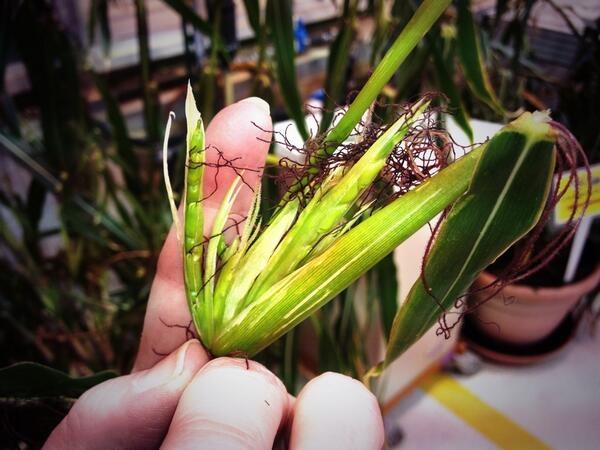ARTICLE: Most People Don't Give These Interesting GMOs The Credit They Deserve
The following is an excerpt of a guest column by GMO Answers Expert Janice Person that originally appeared at Forbes.com about some GMOs that people might not know about.
What are some interesting examples of GMOs (Genetically Modified Organisms)? originally appeared on Quora: the place to gain and share knowledge, empowering people to learn from others and better understand the world.
Answer by Janice Person, worked with & eaten GMO crops since 1996, currently works at Monsanto, on Quora:
With the buzz around genetically modified organisms over the past few years, it seems that not everyone knows about the most interesting GMOs. I have quite a few that I enjoy talking about and I frequently hear people ask why they haven’t heard of them before. So, I’m going to walk through some of my favorites that are the type of genetically engineered products that most people mean when they say GMO.
INSULIN — Few folks think about GMOs in the full set that science does, but insulin is considered the first GMO, before that it was sourced from taking the pancreas from animals. Having had a diabetic or two in my extended family, the ability to produce insulin faster and easier is something really rewarding and I frequently wonder how awesome it would feel to have been on that breakthrough team to develop something that proves to be lifesaving for others.
IN A NUTSHELL — My favorite GMO is probably the American chestnut tree that the State University of New York College of Environmental Science and Forestry has been working on. I grew up in a part of the US where chestnut trees were the most abundant trees in America’s Appalachian Mountains. It was an important hardwood during my grandparents’ lives, but the tree was lost as the forests were devastated by a blight. That not only changed the combination of trees, but resulted in shifts of wildlife that fed on American chestnuts. A TEDx session from SUNY researcher Bill Powell does a great job explaining the project and is so compelling that individuals like me have contributed funding.
THE RAINBOW PAPAYA — The 1980s had a disease called the ringspot virus that was attacking papaya farms in Hawaii. There weren’t cultural practices nor fungicides that could control it. Farmers like Ken Kamiya were facing the total loss of their farms and way of life. Some farmers were burning down trees in hopes of controlling the spread. The University of Hawaii worked on in-plant protection through GMOs. Farmers and scientists on the islands have worked hard to get the public to understand, but it has not been easy, as the NY Times shared in this article: A Lonely Quest for Facts on Genetically Modified Crops. The university developers discuss their work and the public controversy in the recent documentary Food Evolution narrated by Neil deGrasse Tyson (astronomer) (available via iTunes and Amazon), which is also where I learned more about the GMO banana in development in Uganda.
DROUGHT-TOLERANT CROPS — Growing food in some parts of the world is easier than others. In areas like sub-Saharan Africa, the lack of available water can make the difference between being able to feed your family and going hungry. In some other areas, having drought-tolerant crops can mean the ability to pay bills versus risk catastrophe if the season is one that doesn’t bring the necessary rain. This video produced by colleagues shows the result of drought-tolerant corn hybrids for a family in Kenya. It makes me incredibly proud to work for Monsanto.
THE GMO I KNOW BEST — For years, I worked in the cotton industry and I remember clearly when the GMO that we commonly call bt. cotton came out. If you have ever driven at night in a part of the world where cotton is grown, you have probably been grossed out by the high number of insects that hit your windshield. Lots of those moths are laying eggs that will become damaging worms if they get established. There are several GMO traits that protect the plants from those worms, resulting in significant drops in the use of insecticides and reducing on-farm risk which farmers have embraced.
BROADER DEFINITION OF GMO — A lot of scientists have trouble with the common understanding of GMOs because genetic modifications don’t always involve biotechnology. If you are willing to think of that, then one of the selection and breeding advances that leaves me wowed is the brassica family. Something that started as wild mustard is now available in many different forms in the produce section of the store, as some people really liked the state of the leaves, others like the blooms, still others liked the buds. From that we get cauliflower, broccoli, cabbage, brussel sprouts, and kale, just to name a few.

Another one I love thinking about is how what started out as teosinte has over the course of time become the corn, sweet corn, popcorn, etc. that we love. This is the size teosinte’s cob started out as. That’s my index finger, and the kernels are the small green parts that cross over to the left. That was a cob!
To read this article in its original format, please visit Most People Don't Give These Interesting GMOs The Credit They Deserve at Forbes.com.
